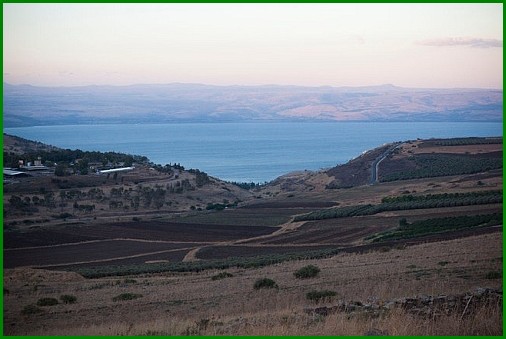Droughts and giving the example of ancient Israel Over 3,200 years ago on the eastern shore of the Mediterranean Sea seething life. To the north lay the mighty empire of the Hittites, to the south - the great Egypt Ramses II. To Cyprus, where copper was mined, walked fleets. Elite Mycenaean culture bathed in luxury.
Merchants and charlatans of all stripes flooded noisy Ugarit on the Syrian coast. In the land of Canaan under Egyptian hegemony flourishing city-state of Hazor and Megiddo.
But in the middle of the XIII century BC. e. Hittite queen suddenly writes Ramses II: «There is no grain in my land. And for some century and a half old world simply disappears. Egypt will never return to the former power; any new states will come new nations.
The Sea of Galilee (photo Yoray Liberman for The New York Times).
Reasons for the Late Bronze Age civilization have turned to dust long ago occupied the minds of historians, and the louder the latest data suggest that it is not in the wars, epidemics and earthquakes, and in climate change.
His contribution to the study made by Israeli scientists. A few years nazadIzrael Finkelstein of the Institute of Archaeology at Tel Aviv University iStiv Weiner of the Weizmann Institute received a grant from the European Research Council for ten studies aimed at the reconstruction of the history of ancient Israel. In this project, Mr.
Finkelstein has joined forces with Palynology Daphne Langgut from Tel Aviv University and Thomas Litt from the Institute of Geology, Mineralogy and Paleontology, University of Bonn (Germany).
Pollen already studied in southeastern Anatolia, Cyprus, Syria and the northern coast of the Nile Delta. It is shown that the crisis erupted in 1250-1100 years BC. e. and covered the entire region. At this time the pollen taken from the sediment of the sea of Galilee, going 45 m and 20 m of water bottom and thereby covering 9 thousand years.
In addition, scientists manually extracted eight core length of about 20 cm in the wadi Seele - in the south of the Judean Desert, west of the Dead Sea.
The analysis was performed with an interval of 40 years - an unprecedentedly high resolution in these parts. Normally pollen is used to study the long-term process and is seen in the strata, located at a distance of about 500 years apart.
Why pollen again? Quite simply, this is one of the strongest organic materials in nature, which in lake sediments and deserts able to last thousands of years. In this case, each plant pollen particular form, so the study of layers allows the reconstruction of vegetation and climate change in a particular historical period.
Three years in Bonn and Tel Aviv was a painstaking analysis of the layers belonging to the years 3500-500 BC. e. It turned out that in the Late Bronze Age in the southern Levant dramatically decreased the number of typical Mediterranean trees, not only wild (oaks, pines and carob), but also olives. Experts interpret the data as indicating a series of droughts.
But it permissible to link the drought and destruction of empires? Yes. Earlier, a geographer and historian Ronnie Ellenblyum of the Hebrew University of Jerusalem on the basis of another crash that occurred on two thousand years later, showed that the steppe and fertile areas react differently to drought.
In the first case, the decline in rainfall does not entail catastrophic consequences, and the green zones drought appears to be exacerbated by cold weather. The relatively high density of the population leads to famine and mass migrations from the north to the south of desperate poor people, armed hordes that swept away everything in its path.
After the drought of the late Bronze Age came the wet period. In the Eastern Mediterranean was a change of culture, a new order that originated in the Levant realm of biblical times. It is worth noting that the authors of the Bible have kept the memory of the terrible times.
Remember Pharaoh's dream about how the seven fat cows were eaten by seven skinny?
in the wake of Tel Aviv: Journal of the Institute of Archaeology of Tel Aviv University, New York Times, compulenta.computerra.ru